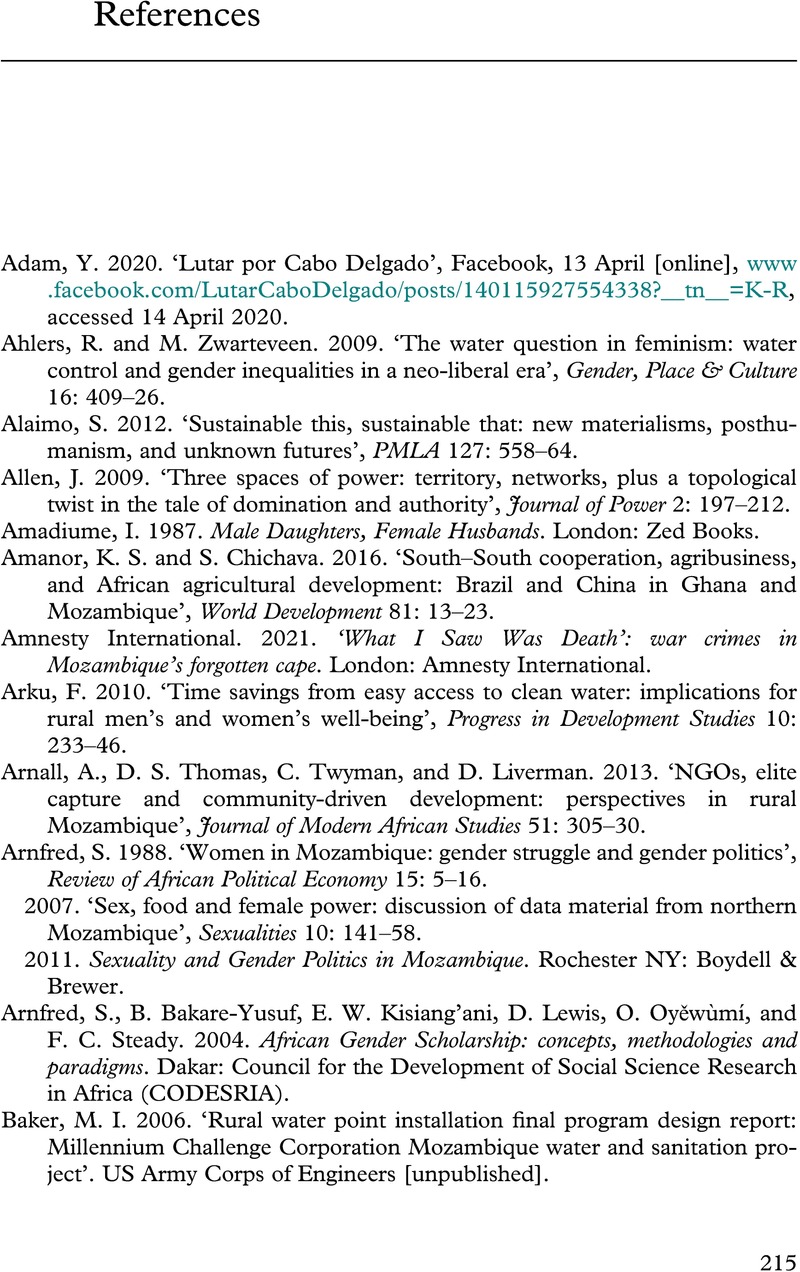Book contents
- Water and Aid in Mozambique
- The International African Library
- Water and Aid in Mozambique
- Copyright page
- Contents
- Figures
- Acknowledgements
- 1 Introduction
- 2 Divergent Development Discourses
- 3 Life before the Handpumps
- 4 Sustainability and Sense of Ownership
- 5 The Politics of Water Access
- 6 Gender Roles and Water Practices with the Handpumps
- 7 Development Encounters
- 8 Conclusions
- Glossary
- References
- Index
- Titles in the Series
- References
References
Published online by Cambridge University Press: 18 August 2022
- Water and Aid in Mozambique
- The International African Library
- Water and Aid in Mozambique
- Copyright page
- Contents
- Figures
- Acknowledgements
- 1 Introduction
- 2 Divergent Development Discourses
- 3 Life before the Handpumps
- 4 Sustainability and Sense of Ownership
- 5 The Politics of Water Access
- 6 Gender Roles and Water Practices with the Handpumps
- 7 Development Encounters
- 8 Conclusions
- Glossary
- References
- Index
- Titles in the Series
- References
Summary

- Type
- Chapter
- Information
- Water and Aid in MozambiqueGendered Perspectives of Change, pp. 215 - 228Publisher: Cambridge University PressPrint publication year: 2022

